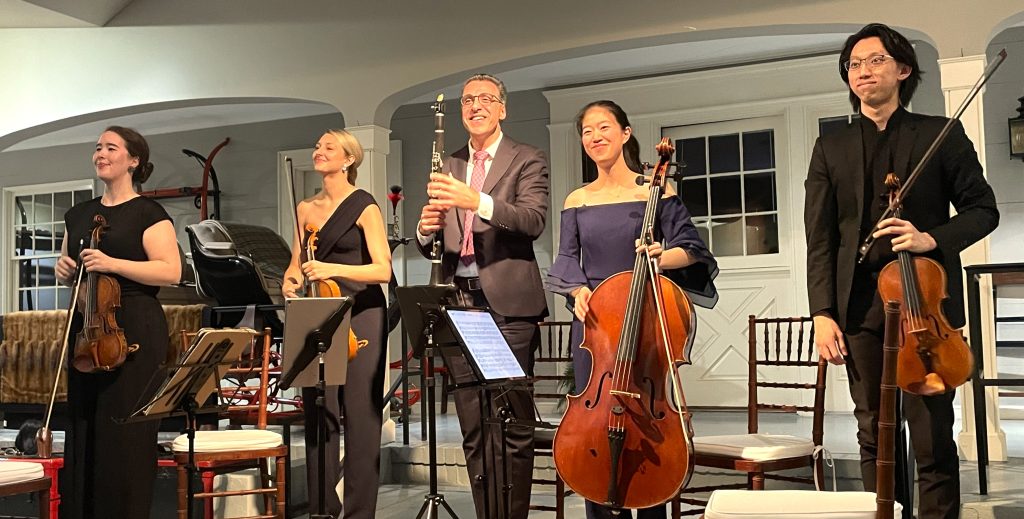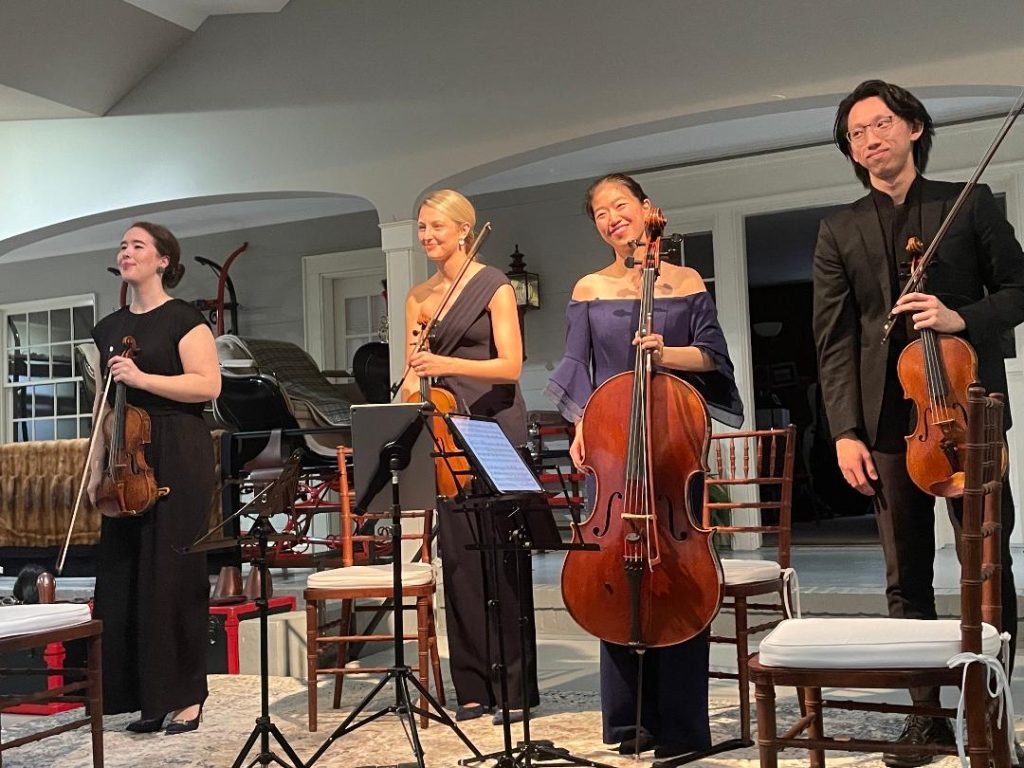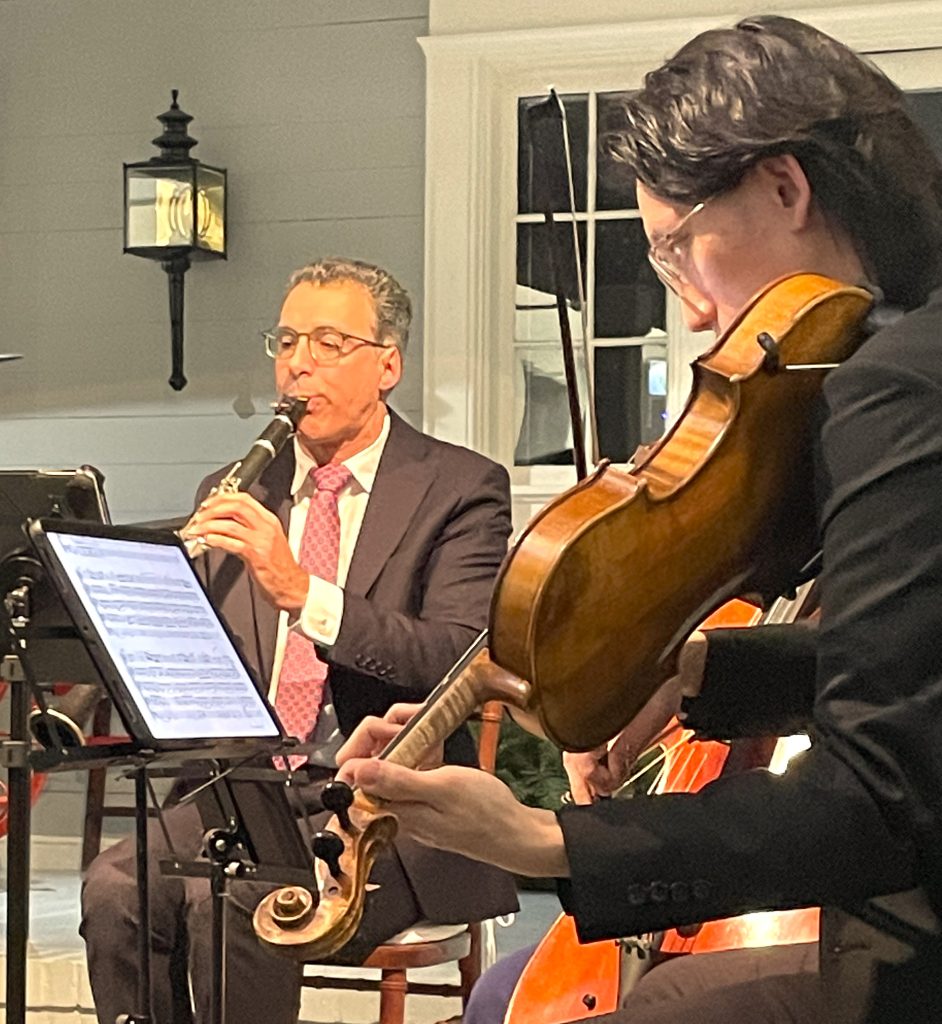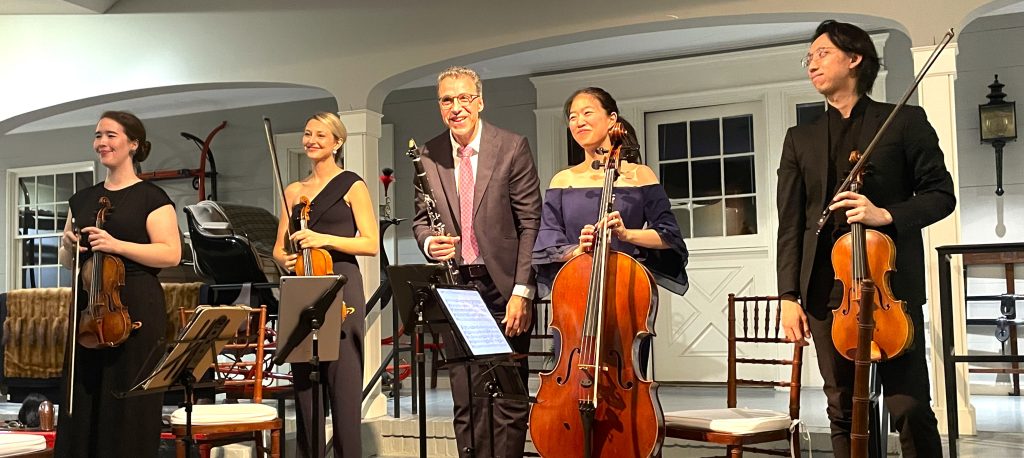
Terra String Quartet, winner of many international competitions, opened with String Quartet in D Minor, K. 421 (June 1783) by Wolfgang Amadeus Mozart (1756-1791). This work has recently been much-performed, nicknamed the “Second Haydn Quartet,” written when Mozart briefly studied under Haydn who approved the composition. Mozart was the first composer to recognize the importance of the clarinet and incorporate it into his work.
This composition relates to the birth of Wolfgang and Constanze’s first child. Mozart composed the opening Allegro in anticipation of this event. The first movement has serious, muted, solemn anticipation and suspense, especially from Harriet Langley on first violin. This movement dramatizes anxiety related to the birth. (Wolfgang had stopped drinking during the birthing and recovery of Constanze.)
Jan Swafford’s 2020 biography of Mozart speaks of the circumstances. Late in life, Constanze wrote a letter to a friend saying that the second movement was written in the bedroom during the days before birthing while Constanze lay helpless in bed attended by a midwife.
That second movement Andante, slightly Haydnesque, was so warm, and loving that I wanted to hear it again. This movement was remarkably tender, dramatizing the tender care Constanze was receiving from the midwife and Wolfgang. Audrey Chen on cello was so tender that I fell in love with the cello and viola floated such light-hearted serenity that I was captivated and prepared for any caprice. The following Scherzo rejoiced for the successful delivery, although the labor was long and bloody. There is a puckish celebration with Audrey Chen on cello in a tuneful triad with Chih-Ta Chen on colorful viola, the two blending violins being the other corner.

A Minuet-like march offered the concluding Allegretto, a delightful dance summation of all is well. On second violin, Amelia Dietrich, carefully assisted that calm transition back to reality at the conclusion with a satisfying, joyous pace created through the addition of an extra note that repeated a triplet motif from the first movement. Harriet Langley on first violin enunciated some high notes which portrayed the joyful comedy of the baby crying for attention. Attention to the baby was a mutual caring Minuet. The march-like sequence perhaps dramatizes the fantasy of the child crawling, then beginning to walk with first steps and mastering the art of walking on two legs in this charming triadic form as the parents look forward, anticipating Raimond’s first steps, Raimond being the new light of their world. (Unfortunately, Raimond died a few months later in August.)
Mozart was the prince of charm, and this composition is such a delight with nimble intertextual weaving of instruments!

Clarinet Quintet in A Major, K. 581 (September 1789), composed ten weeks after the storming of the Bastille in Paris, was composed during the repressive police-state emergency that Austrian Emperor Joseph II imposed as a reaction to what had happened in France. (Constanze later destroyed all of Mozart’s letters from this period.) Although Wolfgang was busy composing a new opera, Cosi fan tutte, he somehow found the time to compose this quintet for his good friend Anton Stadler who played basset clarinet in A, his instrument being slightly larger than the common size. The result was an exquisitely warm celebration of friendship and the instrument. This tautly woven work remains one of the most famous clarinet compositions.
The gentle opening bars function as a recurring lyric motif, the clarinet dancing through the range of the instrument with Oskar Espina Ruiz (the genial Music Director of the Music Mountain series) swaying through a marvelous web of liquid notes trailing into the room while the strings overlay, bedecking the instrument as if it were a floating reverie available for each listener to fill in their cherished recollection.
The concluding Larghetto offers a simple ABA line resembling an operatic love song where the clarinet becomes the lead voice in a dialogue duet with the first violin which results in an ironic staccato no-reply as the clarinet politely rejects the first violin with light-hearted ambiance; the second violin and magnificent viola being also dismissed as the cello affirms the fate of the strings as not being as worthy, the clarinet being socially above the strings and perhaps able to mate only with another horn in an accomplished orchestra.
Mozart had a delicious sense of humor, and this quintet stamped a smile on every face in this sold-out performance in the Carriage House of the Wethersfield Estate under the management of Hillary Henderson who created this marvelous musical event.

